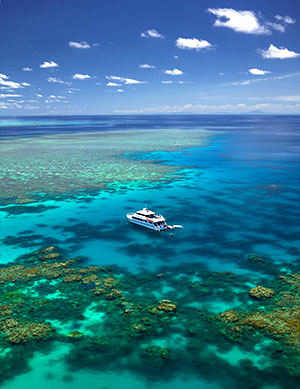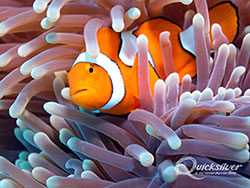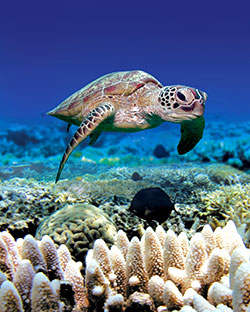About the Great Barrier Reef

The Great Barrier Reef is the most extensive structure ever built by living creatures and the only life form on Earth visible from the moon. One of the natural wonders of the world, the World Heritage Great Barrier Reef holds a fascination for overseas visitors and Australians alike. It is the largest coral reef in the world, made up of 2500 separate reefs, it stretches over 2000 km from the northern tip of the continental shelf near Papua New Guinea, to Bundaberg in the south.
The 540 islands of the Great Barrier Reef are of two distinct types, continental and coral cay. With a landmass which can contain nearly five Japans, seven Britains and is half the size of Texas – there certainly is a lot to see!
A complex geological history
The Great Barrier Reef first began to grow about 18 million years ago. Since this time, various geological events, such as Ice Ages and low seawater levels have interrupted reef growth. The reefs we see today have grown on top of older reef platforms during the last 8000 years – since the last Ice Age.
Amazing marine life diversity
CoralsThe Great Barrier Reef has some of the highest marine life diversity in the world, including:
- 450 type of corals
- 1500 types of fish
- 4000 types of molluscs.
 There are more different species of animals and plants in a cubic metre of the Great Barrier Reef than in any other environment in the world – including tropical rainforests. In fact, some reefs in the Great Barrier Reef have more different fish types than in the entire Caribbean Ocean.
There are more different species of animals and plants in a cubic metre of the Great Barrier Reef than in any other environment in the world – including tropical rainforests. In fact, some reefs in the Great Barrier Reef have more different fish types than in the entire Caribbean Ocean.
In 1975 the Great Barrier Reef Marine Park (GBRMP) was established. In recognition of its universal value, the Great Barrier Reef was inscribed on the World Heritage list in October 1981 and is now a Marine Park managed by the Great Barrier Reef Marine Park Authority. GBRMPA’s aim is to increase people’s understanding of the reef and ensure that it is used in the most enjoyable and least harmful fashion under the auspices of a marine park permit system.
As well as its natural and ecological importance, the Great Barrier Reef is also of cultural and historical significance with human involvement with the reef beginning thousands of years ago and extending through to the first visits to Australian by European explorers in the 17th and 18th centuries, and on to World War II and more recent times.
As well as being the most significant drawcard for visitors to North Queensland, it also represents the foundations for local commercial and recreational fishing industries.
